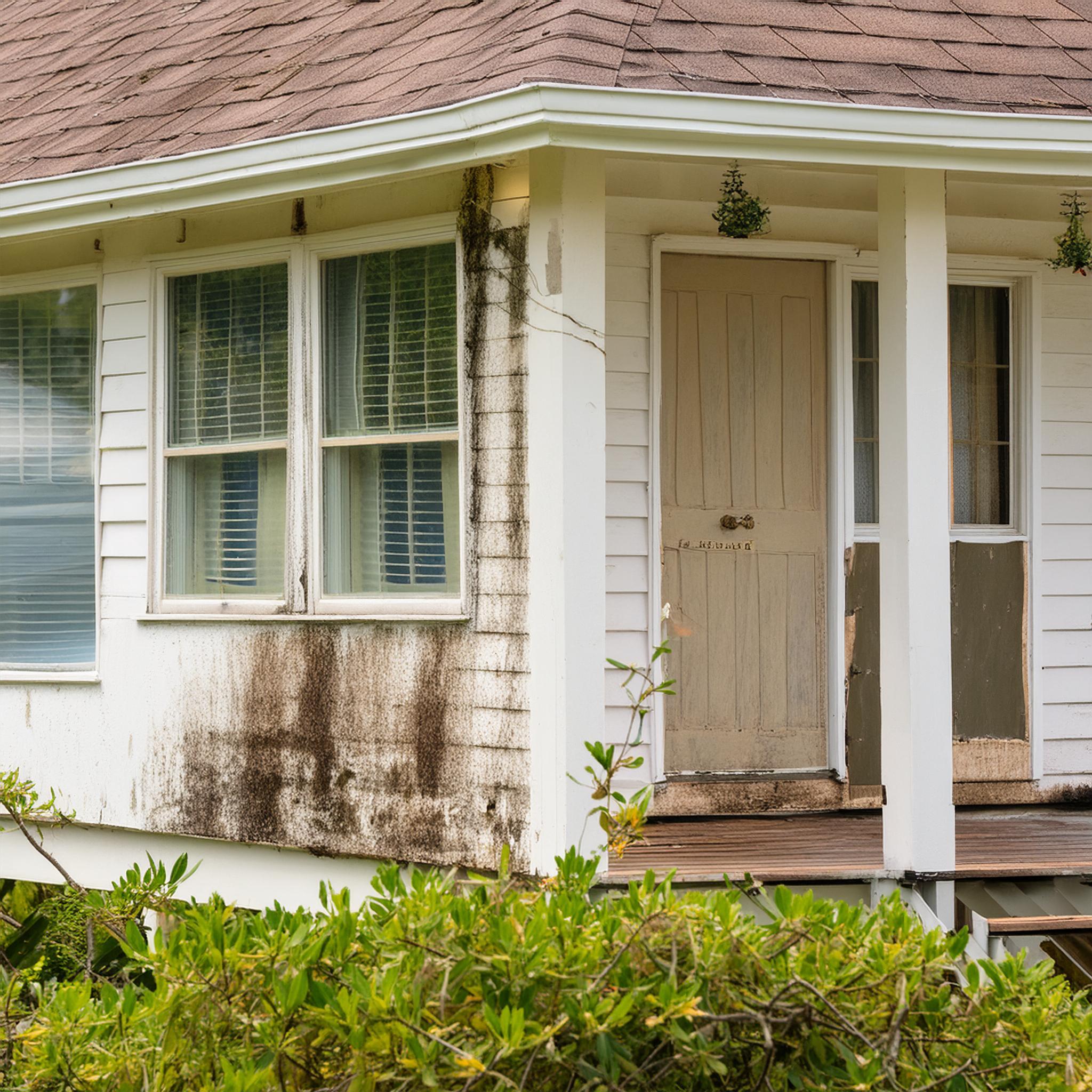As part of a team dedicated to restoring homes to their prime condition, I’ve encountered numerous challenges that homeowners face. One recurring issue is the unsightly and potentially harmful presence of mold on the outside of houses—a problem often underestimated in its ability to affect both property and health. Through this blog, I aim to guide you through understanding, preventing, and addressing exterior mold growth with practical insights drawn from our extensive experience in mold remediation.
What Causes Mold on the Outside of a House?
Factors Contributing to Outdoor Mold Growth
Mold thrives in moist, warm environments and can find its way onto your home’s exterior through various means. Common contributors include high humidity levels, inadequate drainage around the foundation, leaks in roofs or siding, and overhanging trees that shade parts of the house too much, preventing areas from drying properly.
Excess moisture not only comes from natural rainfall but can also accumulate due to improper gutter function or landscaping issues that allow water to pool near your home’s foundations. These conditions create an ideal breeding ground for mold spores already present in the environment to attach themselves to surfaces and proliferate.
Understanding these factors is crucial because it empowers homeowners with the knowledge needed to take proactive steps toward mitigating risks before they escalate into larger problems requiring professional intervention.
The Dangers and Impacts of Exterior Mold
Health Risks Associated with Mold Exposure
Mold exposure, even through the exterior of your home, can pose significant health risks. Individuals with allergies or respiratory conditions may experience worsened symptoms when close to mold spores. These can include coughing, sneezing, throat irritation, and in severe cases, difficulty breathing—a concern not just for human occupants but pets as well.
Potential Damage to Home Structures and Property Value
Beyond health implications, mold growth on a house’s exterior surfaces can lead to substantial structural damage over time. Wood siding is particularly vulnerable; if left unchecked, mold can penetrate and weaken structural integrity. Moreover, the unsightly appearance of mold diminishes curb appeal drastically, affecting property value negatively and making it challenging should you decide to sell down the line.
Recognizing these dangers underscores why addressing outdoor mold promptly and effectively isn’t merely aesthetic consideration—it’s essential maintenance preserving your well-being and acting as an investment in your home.
How to Identify Mold on Your Home’s Exterior
Recognizing Signs Early
Early detection of mold is key to preventing its spread. Look for discolored patches or streaks on siding, especially in areas that are shaded and retain moisture. Unlike dirt, which can be easily brushed off, mold tends to adhere firmly to surfaces and may appear fuzzy or slimy.
Differentiating Between Mold, Mildew, and Dirt
Understanding the difference between mold, mildew, and simple dirt accumulation is crucial for effective treatment. Mold typically presents as black or greenish-black patches and grows in a circular pattern. Mildew might look similar but usually remains surface-level with a powdery texture; it’s most commonly white or gray. On the other hand, dirt will not exhibit growth patterns nor penetrate surfaces like mold does.
Identifying what you’re dealing with ensures that you apply the correct cleaning methods and treatments—preventing unnecessary damage to your home’s exterior while effectively addressing the root problem.
Preventative Measures Against External Mold Growth
Proper Landscaping and Drainage Solutions
One of the most effective strategies to prevent mold growth on your home’s exterior is ensuring proper water drainage away from the structure. Slope landscaping so that water runs off away from foundations, and consider installing French drains or gutter extensions if necessary. Keeping gutters clean and functional prevents water overflow that contributes to mold-friendly conditions.
Regular Cleaning and Maintenance Schedules for Your Home’s Exterior
Periodic washing of your home’s siding, roofs, and other exterior surfaces can significantly reduce the risk of mold accumulation. Use a mild solution of bleach or vinegar mixed with water to gently cleanse areas prone to moisture retention. For homes in humid climates or regions with frequent rainfall, scheduling more frequent cleanings may be beneficial.
Choosing Mold-Resistant Materials and Paints
When building a new house or renovating existing structures, opt for materials known for their resistance to mold growth. Certain types of wood like cedar are naturally resistant, while others can be treated for enhanced protection. Similarly, investing in high-quality paints containing mildewcides can deter mold from taking hold on painted surfaces.
Implementing these preventative measures forms a comprehensive approach toward maintaining not only the aesthetic appeal but also the structural integrity of your home by mitigating risks associated with external mold growth.
DIY Solutions vs. Professional Assistance
Safe and Effective Methods and Techniques to Use at Home
For tackling mold on your home’s exterior, a mixture of household bleach diluted with water can be effective. Apply the solution gently using a spray bottle or garden sprayer, taking care not to damage plants or landscaping around the treated area. After application, allow it to sit for several minutes before rinsing off thoroughly with water.
When to Call Professionals for Assistance
While many minor mold issues can be addressed with DIY solutions, extensive or persistent growth often requires professional intervention. If mold covers large areas or is located in hard-to-reach places like high sections of siding or roofs, it’s safer and more efficient to enlist experienced restoration specialists who have the tools and knowledge necessary for comprehensive removal.
Professionals are also recommended when dealing with certain types of materials that could be damaged by home remedies; their expertise ensures that cleaning processes do not compromise the integrity of your house’s exterior surfaces while effectively eliminating mold problems.
At J&R Restoration, we have decades of experience in dealing with mold, water damage, fire damage, and more. Contact us for all your South Florida restoration needs.


